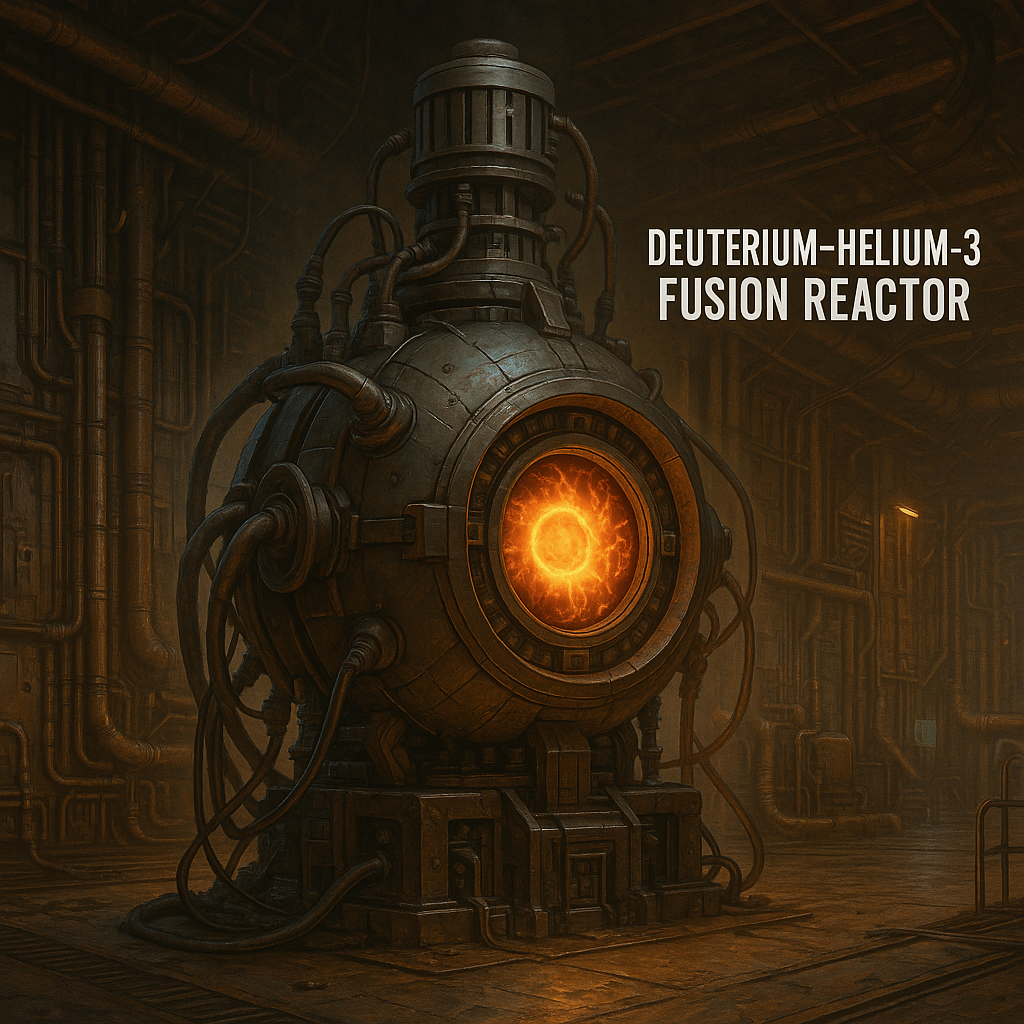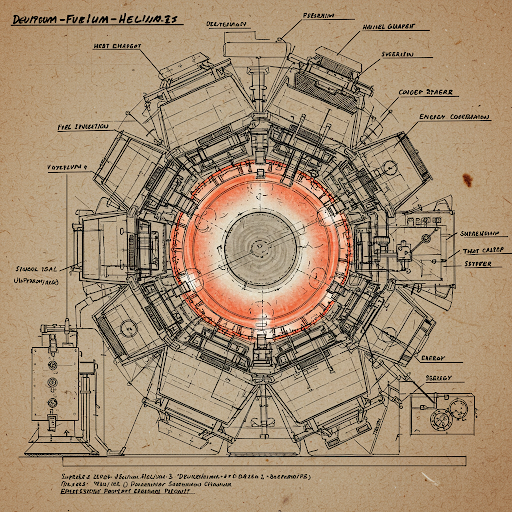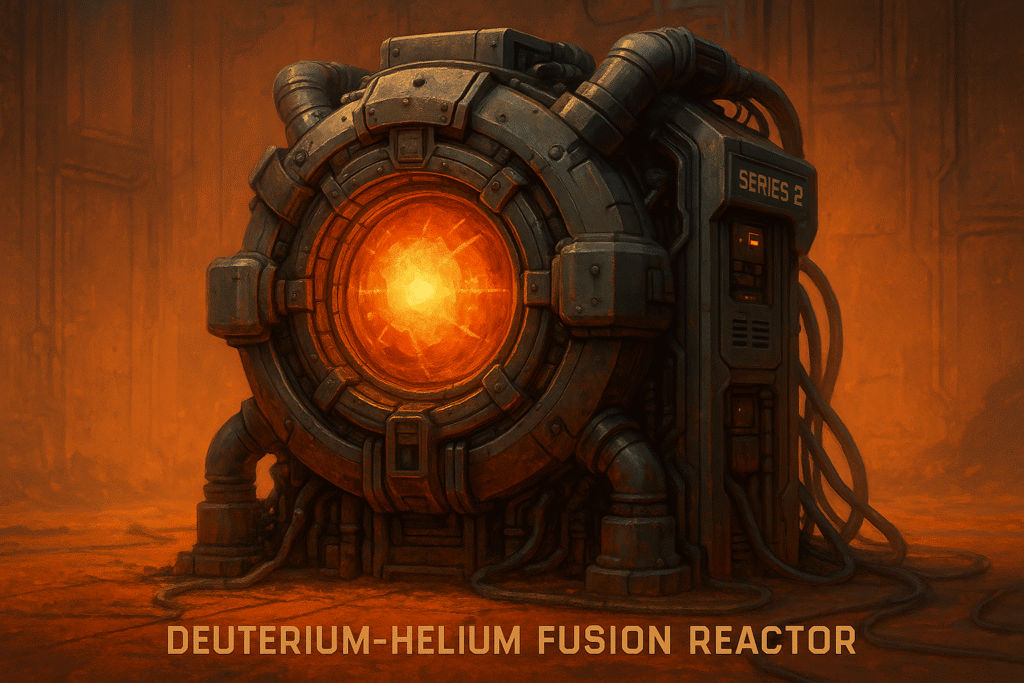Deuterium-helium-3 Fusion Reactors
Deuterium-Helium-3 (D-He3) fusion reactors represent an intriguing and potentially advantageous approach to fusion energy compared to the more commonly researched Deuterium-Tritium (D-T) reaction. Here are some thoughts on this concept:
Deuterium-helium-3 Fusion Reactors Potential Advantages:
- Reduced Neutron Production: The primary appeal of D-He3 fusion is its potential to be aneutronic. The main reaction produces a proton and a helium-4 nucleus: D+3He→p(14.7 MeV)+4He(3.6 MeV) This significantly reduces the production of high-energy neutrons, which are a major concern in D-T reactors due to:
- Neutron Activation: Neutrons can make the reactor materials radioactive, leading to long-term waste disposal challenges.
- Material Damage: High-energy neutrons can cause structural damage to the reactor components, limiting their lifespan.
- Shielding Requirements: Extensive and costly shielding is needed to protect personnel from neutron radiation.
- Direct Energy Conversion: The charged particles (protons) produced in the D-He3 reaction can potentially be directly converted into electricity using electrostatic direct energy converters. This offers the possibility of higher energy conversion efficiencies compared to the thermal conversion methods typically used in D-T reactors.
- Reduced Fuel Breeding: Helium-3 is a stable isotope, unlike tritium which is radioactive and requires breeding (usually from lithium) within the reactor or an external source. This simplifies the fuel cycle.
- Lower Radioactive Waste: The primary products of D-He3 fusion (4He and protons) are not radioactive or produce significantly less radioactive waste compared to the neutron-activated materials from D-T fusion.
- Potentially Higher Energy Release: The total energy released per reaction (18.3 MeV) is comparable to D-T fusion (17.6 MeV).
Significant Challenges:
- Higher Ignition Temperatures: The D-He3 reaction requires significantly higher plasma temperatures (around 200 million degrees Celsius) to achieve fusion compared to D-T (around 100 million degrees Celsius). Reaching and sustaining such high temperatures poses a substantial engineering challenge, demanding more powerful heating systems and robust plasma confinement.
- Lower Reactivity: The cross-section (probability of reaction) for D-He3 fusion is lower than that of D-T fusion at relevant temperatures. This means that a D-He3 reactor would likely need higher plasma densities and longer confinement times to achieve comparable power output.
- Helium-3 Availability: Helium-3 is expected to be readily available on Mars. Here’s why:
- Solar Wind Deposition: Over billions of years, the solar wind, which is composed of charged particles including Helium-3 nuclei, has been bombarding the surface of Mars. This has led to the accumulation of significant amounts of Helium-3 trapped within the Martian regolith (soil).
- Potential Abundance: Estimates suggest that the Martian regolith could contain a considerable amount of Helium-3, potentially enough to sustain a Martian colony with fusion power for a very long time.
Therefore, while extracting and processing Helium-3 from the Martian regolith will present engineering challenges, the resource itself is believed to be abundant on the planet.
- Neutron Production from Secondary Reactions: While the main D-He3 reaction is aneutronic, secondary reactions involving deuterium nuclei (D-D fusion) within the plasma will still produce some neutrons:
- D+D→T(1.01 MeV)+p(3.02 MeV)
- D+D→3He(0.82 MeV)+n(2.45 MeV) Minimizing these D-D reactions by using a helium-3 rich fuel mixture is possible but can impact the overall reactivity.
- Plasma Confinement: Achieving the necessary plasma confinement at the required high temperatures and densities is a major hurdle. Existing magnetic confinement devices like tokamaks and stellarators would need significant advancements to operate efficiently with D-He3 fuel.
- Direct Energy Conversion Technology: Efficient and high-power direct energy conversion systems for the energetic protons produced by D-He3 fusion are still in the research and development phase.
Overall Thoughts:
D-He3 fusion holds the promise of a cleaner and potentially more efficient fusion power source due to its reduced neutron production and the possibility of direct energy conversion. However, the significantly higher temperature requirements and the scarcity of Helium-3 on Earth present formidable challenges.


